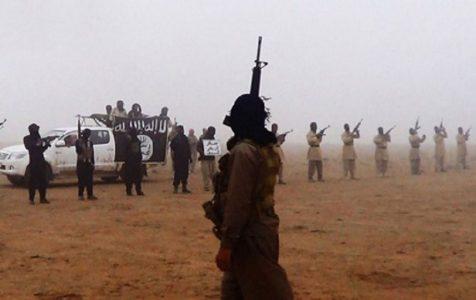
ISIS-Hamas feud spills across the border
The Islamic State (IS) affiliate Sinai Province last week posted a video of the execution of one of its Gazan members. In the video group members flank Moussa Abu Zamat as a young man named Mohamed Saad Al-Seidi recites why Abu Zamat had been sentenced to death. Abu Zamat was charged with delivering weapons to Hamas which is described in the video as an “apostate” group.
Abu Zamat was killed by a gunshot to his head fired by ex-Hamas member Mohamed Al-Degni. The family of the latter denounced him when they were informed their son had killed one of the “Hamas mujahideen”.
IS operations in Sinai are mutating. IS and its affiliates are targeting more civilians — a shift most dramatically signalled by the attack on Al-Rawda Mosque in Arish, which left more than 300 worshippers dead after Friday prayers on 24 November. They have also targeted Arish airport with a Kornet anti-tank guided missile.
It appears foreign elements are gaining more control within the ranks of the terrorist organisation. Group leaders increasingly have Palestinian, Iraqi and Saudi names.
Following the collapse of its Syrian and Iraqi strongholds the group is seeking to re-establish a regional presence, and is looking to do so in Sinai.
A Gazan observer who spoke on condition of anonymity told Al-Ahram Weekly that “returning terrorists find it easier to take refuge in Sinai than in the Gaza Strip where Hamas is in control and fights them using all possible means”.
“Sinai Province is exploiting the animosity between Hamas and its former members to send a number of messages, including that Sinai is a better refuge than Gaza in the hope of increasing the number of recruits, and to pursue an array of goals, undermining the recent breakthrough in talks held between Cairo and Hamas among them.”
Not long ago extremists from Gaza would have headed to Turkey, Syria or Iraq. Now they head to Sinai. Despite tightened security measures and ongoing efforts to demolish tunnels it is proving difficult to maintain a lockdown. IS was always convinced it could not establish itself in Gaza, and Hamas’ strong grip on the Strip was probably the reason IS leader Abu Bakr Al-Baghdadi did not attempt to create a stronghold there.
The agreement between Fatah and Hamas may weaken the ability to confront terrorist groups there, said the Gazan source.
“It would be better for Hamas’ security authorities to remain at the helm of fighting these terrorists,” he argued. “Hamas arrested three IS militants who were sneaking across the border last week, but it is providing no information on the ongoing investigation. There have been similar arrests in the past.”
Brigadier General Khaled Okasha, a security expert and a member of the National Council to Combat Terrorism, says “terrorist groups are currently witnessing a degree of splintering which has resulted in a spate of agreements and disagreements on terrorist attacks”.
“The Rawda Mosque attack is a case in point. In this instance the tribal factor was disregarded.”
“These terrorists, who witnessed IS developments abroad, managed to travel to Sinai from Syria and Iraq. Their expertise cannot go unnoticed. Al-Seidi, their mufti, joined the organisation abroad and has condemned to death many members who attempted to escape from the peninsula, be they foreigners or from Sinai,” Okasha told the Weekly.
Most recently the group claimed responsibility for the attack on Mar Mina Church in Helwan on 29 December 2017 in which a policeman and six people died, the 9 August 2017 attack on a police vehicle in Sebeika village, Arish, in which four policemen died and the bombing in Haram district which claimed the lives of six security personnel last year.
Source: Ahram





